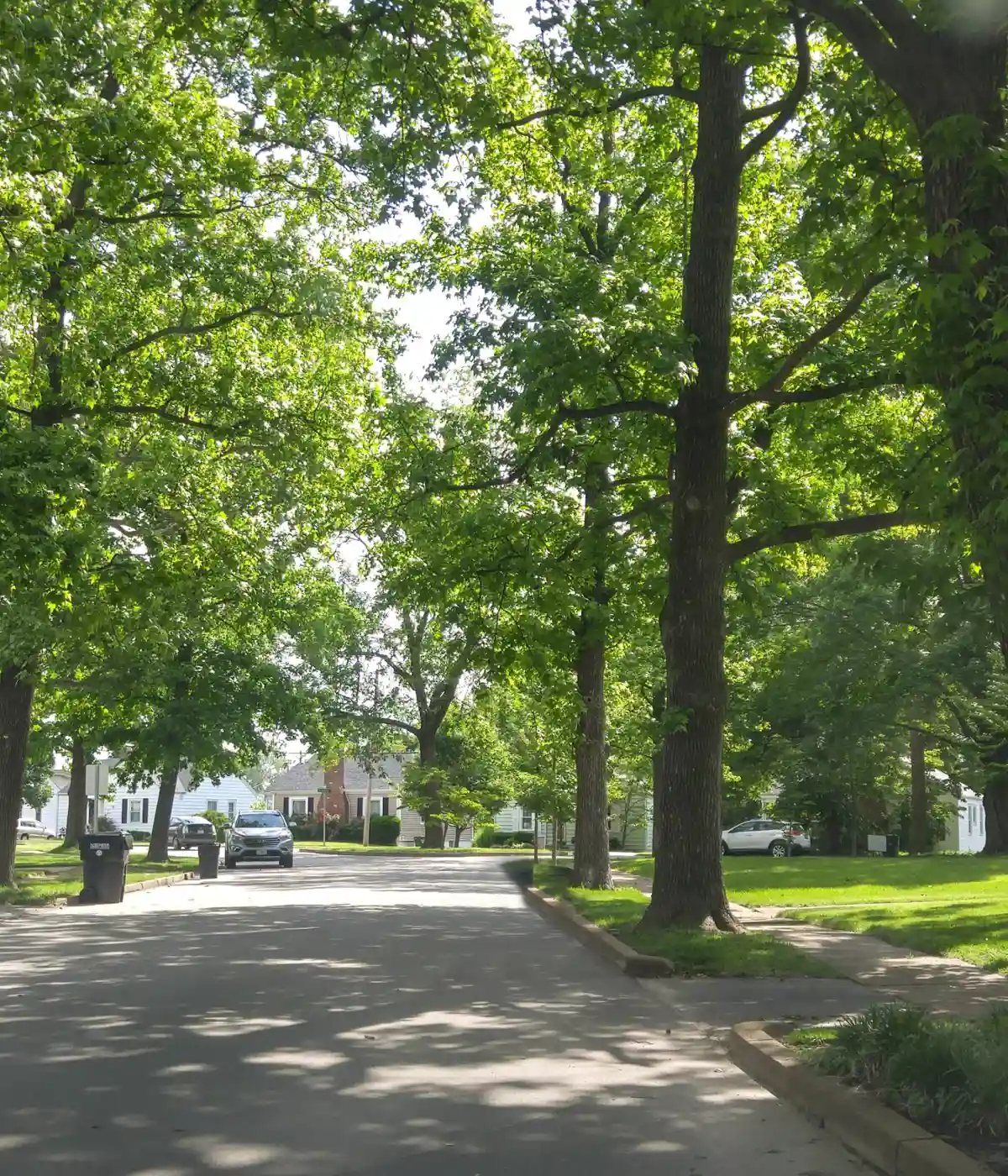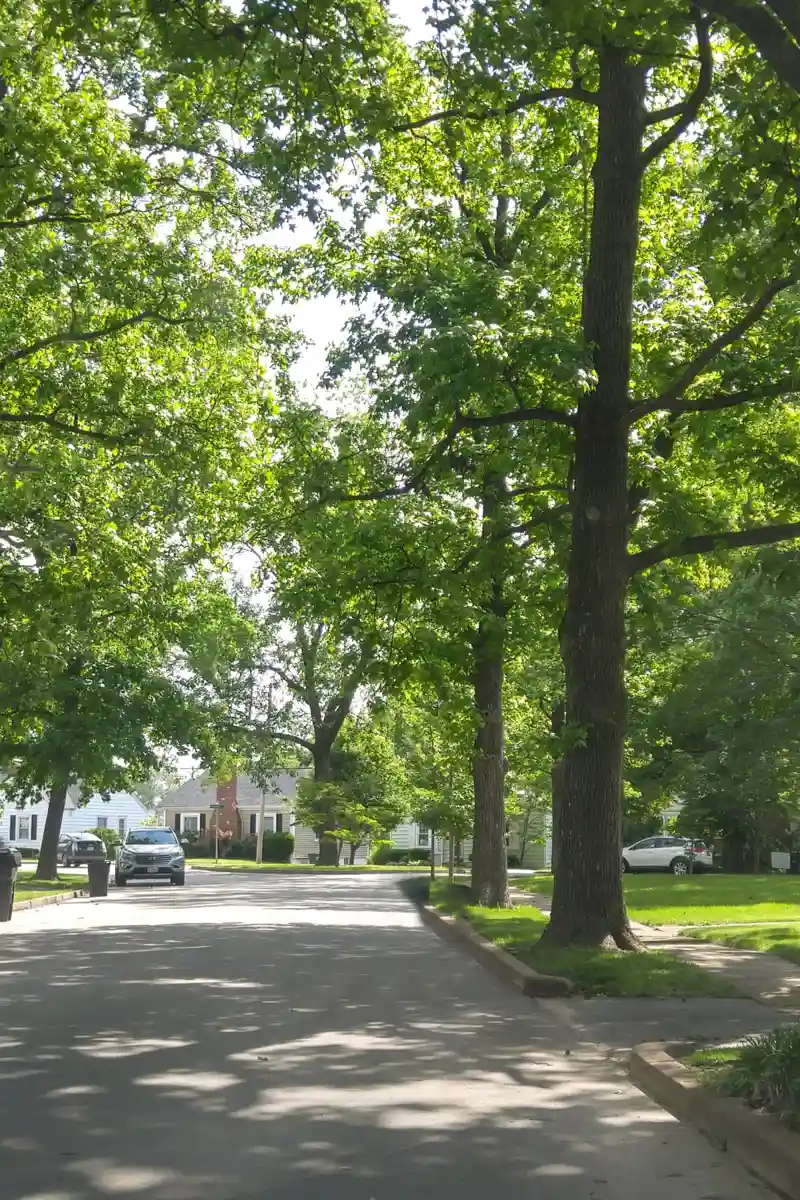Willow trees are like graceful ballerinas: elegant, flowing, and always in motion – even with the slightest breeze.
Their long, dropping branches seem to whisper in the wind and their soft, flexible wood has been useful for centuries.
What does a willow tree symbolize? In ancient times, willow trees were even thought to have magical properties, symbolizing everything from fertility to protection against evil spirits.
Today, these trees hold a special place in homeowners’ backyards, representing resilience, renewal, and calmness in a busy world.
How do you know if you have one of these poetic trees in your yard? Maybe you have a tree that bends and sways with the wind and has fluttering leaves that hang delicately on long, slender branches, and you’re wondering, “Is this a willow tree? And, if so, what kind?”
Let’s talk about how to identify a willow tree, the different types of willow trees, and their unique characteristics, so you can learn how to spot one and care for them properly.
How to Identify a Willow Tree
Even if you think you can tell a willow tree from other trees, you’re probably asking yourself, “What does a willow tree look like?”
Willow trees are best known for their slender, flexible branches and narrow, pointed leaves.
Willow tree bark is typically rough and deeply furrowed, giving the tree a rustic appearance.
There are about 400 different types of willow trees worldwide, but you’re most likely to come across these common ones in the U.S.
Willow Oak Tree
Description: Despite its name, the willow oak is actually a species of oak tree, but its leaves resemble those of willow trees.
Height: 40 to 60 feet
Grow Zones: 5 to 9
Hybrid Willow Tree
Description: This faster growing tree is often used as a windbreak or privacy screen. They are prized for these characteristics, as well as their hardy nature.
Height: 35 to 75 feet
Grow Zones: 4 to 9
Desert Willow Tree
Description: Native to the Southwest U.S., the desert willow isn’t a true willow but shares similar traits. It’s known for its bright pink or purple flowers.
Height: 15 to 30 feet
Grow Zones: 7 to 9
Weeping Willow Tree
Description: Perhaps the most iconic of all willow trees, the weeping willow is known for its long, drooping branches that almost touch the ground, giving it a cascading effect.
Height: 30 to 50 feet
Grow Zones: 6 to 8
What is the Difference Between a Willow Tree and a Weeping Willow Tree?
While weeping willow trees are the most famous species, they are just one of the many types of willow trees out there.
A weeping willow is instantly recognizable by its distinctively drooping branches, which give it that melancholic yet graceful appearance.
Other willow trees, like the desert willow or willow oak, have upright branches and different types of leaves, but they still retain the signature narrow, lance-shaped leaves that many willow trees share.
Willow Tree Bark
If you’re examining your tree up close, you’ll notice that willow tree bark is usually rough, ridged, and deeply furrowed. It ranges from a light brownish-gray to a dark, almost black color as the tree matures.
The bark of a weeping willow tree is particularly thick and gnarled, adding to its character.
Willow Tree Leaves
Willow tree leaves are one of the easiest ways to identify a willow.
They are long, narrow, and taper to a sharp point. The leaves are typically light green on top and pale underneath with fine serrations along the edges.
If your tree has leaves that look like this, it’s likely a willow.
Willow Tree Care & Characteristics
Willow trees are relatively easy to care for and have specific growth needs to thrive. Here’s how to understand your willow tree’s needs and give your tree the best care:
- Grow Zones: Depending on the species, willow trees generally thrive in zones 4 to 9.
- Bloom: When do willow trees bloom? Willow trees bloom in spring, typically producing small, inconspicuous flowers called catkins.
- Height/Spread: Willow trees can grow anywhere from 30 to 75 feet tall with a wide canopy spread. How fast do willow trees grow? Some varieties can grow up to 10 feet in a single year.
- Sunlight: Willow trees thrive in full sun but can tolerate partial shade.
- Water: Willows love water. You’ll often find them growing near rivers, lakes, or wetlands. If you’re wondering where to plant willow trees, choose a moist area where they can soak up water, but make sure they have room to grow.
Potential Threats
Like all trees, willow trees face a few threats.
They are susceptible to pests like aphids. These soft-bodies, sucking insects tend to cluster in large colonies on new growth where their feasting can cause leaf curling. There are many types of aphids, but most of them excrete honeydew, a sugary substance that collects on lower leaves and objects underneath infested trees, including sidewalks, driveways, patio furniture, and vehicles. This honeydew attracts a fungus called sooty mold that can give your tree leaves and branches a black, sooty appearance and block sunlight from your plant. Horticultural soap or insecticides, as well as proper tree care, can help control aphids. Willows are also fed on by various caterpillars and beetles that can defoliate the tree, such as spongy moth, imported willow leaf beetle, and Japanese beetles. Willows are quite tolerant of defoliation, but these insects can be managed with insecticides when necessary.
Fungal diseases like willow scab and black canker can also be problematic, especially in overly wet conditions. Willow scab attacks leaves in early spring, causing them to turn brown or even black. Black canker infects willow trees later in the season, usually attacking foliage that was missed by willow scab. This fungus appears as small, sunken depressions on twigs, branches, and tree trunks. Both diseases are usually present together when they are referred to as willow blight, which can cause extensive defoliation, branch dieback, and even tree death.
Applying fungicides at the right time, along with pruning diseased branches and fertilizing properly, can help fight willow blight.
Regular inspections and care by a certified arborist can help prevent and treat these issues.





